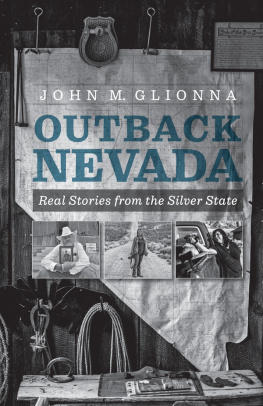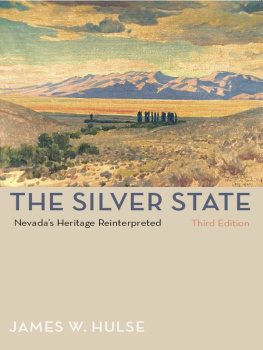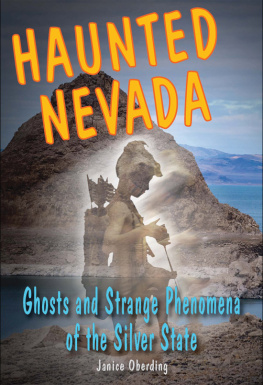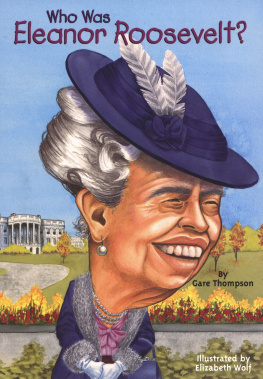S is for Silver
An Nevada Alphabet

Written by Eleanor Coerr and Illustrated by Darcie Park

For my grandchildren, Ethan and Warren
Special thanks to Amy
and other editors for their help.
ELEANOR

Special thanks and love to my mom and dad, John and Nicole.
Youve always been there for me. I dont know what
I would do without your love and inspiration.
To all my family, Tom, Bonnie, Sandy, Justin, Melia, and Nathan.
Your support and enthusiasm recharges me.
Thank you to my friends, Donna and Caryn,
for your help and friendship.
DARCIE
A
Our official state animal, the desert bighorn sheep can be found living in southern Nevada. Nevadas mountainous desert country is a good environment for the animal because it can survive without water for long periods. A male bighorn is about four and one-half feet tall and can weigh as much as 175 pounds.
There are two other kinds of bighorn sheep living in Nevada: California bighorn sheep in northwest Nevada, and Rocky Mountain bighorn sheep in northeast Nevada. In total there are nearly 1,500 of these proud animals left in our state, more than any other place in the world.
Animal is the word that begins with A and one thats amazing in every way.
An awesome animal that is so greatthe bighorn sheep, animal of our state.

B
In April of 1967 the mountain bluebird was named Nevadas state bird. In calm skies it can travel very fast20 to 30 miles per hour. This bird is a brave survivor in our harsh desert climate.
A member of the thrush family, our bluebirds song is a clear, short warble. The bright blue-colored male doesnt have to sing for long to attract his more plain-colored mate. Female bluebirds are brownish gray with a white belly and undertail, and a bit of blue on their tail.
The female bluebird builds a cup-shaped nest using dry grass stems, plants, and thin strips of bark. It may take from two days to more than a week to finish building the nest. Once the nest is built, the female lays one egg each day until the clutch, usually with five or six eggs, is complete. Mountain bluebirds eat seeds, berries, fruit, and insects.
B is for mountain Bluebird, our state bird we love to see feeding their young, keeping them neat and singing for usoh so sweet.

C
Carson City was the crossroads for miners and pioneers and soon it became a fine location for a thriving trading post. The name is taken from the Carson River, which was named after the famous scout, Kit Carson. Explorer John Fremont and Carson together drew the first map of Nevada.
When the Nevada Territory was established in 1861, Carson City was named as the territorial capital. After Nevada was granted statehood in 1864 by Congress, Carson City became our state capital.
A small spruce tree was planted in the town square. In 1937 when the tree had grown to 95 feet tall, it was adorned with its first holiday lights. Now, 750 bulbs send out a glow every holiday season.
Carson Citys oldest tree is over 200 years old and in 1976 it was named The Nevada Bicentennial Tree. This cottonwood tree is eight feet thick!
Carson City, thats our C where our capitol makes its home.
Here laws were made fair and right under the silvery, shining dome.

D
Dat-So-La-Lee was the last of the great Washoe artists who knew the ancient art of weaving their tribal history and stories into baskets. As a child she gathered reeds and willow stems and then dyed them using tree bark and roots, later weaving them into fine baskets. She is best known for her degikup (day-geecoop) baskets. These baskets begin with a small base, extending to a large circle, then becoming smaller until the opening at the top is the same size as the base.
She was born about 1850 in the Carson Valley and lived to be nearly 96 years old. In her later years, when her eyesight was not as sharp as it oncewas, she had become so talented at weaving the intricate designs that she no longer needed to see well to create these baskets.
Dedicate the letter D to a woman called Dat-So-La-Lee.
Decorative baskets she would weave so a history of her people she could leave.

E
EUREKA could be heard during the 1800s mining boom as many people discovered gold and silver in Nevada. Some believed elf-like creatures called tommyknockers made tapping noises where there was gold. When there was no more tapping, and the mines became bare, the families left for ranchlands and cities. A town named Eureka is located in the northern part of Nevada, also called Miner Country.
Gold is still mined in Nevada and the state leads the United States in the productionof gold. It is the third-highest gold producer in the world behind Australia and South Africa.
The word eureka means I found it, and was first uttered by the Greek inventor Archimedes in about 225 B.C. when he found a way to measure the purity of gold.
We hear Eureka bringing us to E.
After digging in the rocky ground, it was gold they came to see.

F
The official colors of Nevada are blue and silver and these are both represented on our state flag. The background of the flag is blue; in the upper left-hand corner is a five-pointed silver star surrounded by sagebrush. Since the state was admitted to the Union during the Civil War, Battle Born is printed across the top and is a fitting slogan. Nevada was the only state to enter the Union during the Civil War years. Above the state name is a silver star representing silver, our state mineral. Nevada, a Spanish word for snowclad, is also printed on the flag as a reminder of the towering peaks of the Sierra Nevada mountain range. The flags design was changed a few times before its present design was adopted in 1991.
F is for our Flag a flyin with Nevada glistening gold and shining stars of silver to honor treasures we still hold.

G
Our first great seal was approved by the leaders of the Territory of Nevada on November 29, 1861. At that time the motto of the territory was Able and Willing and it appeared on the seal. In 1866 the state adopted a motto: All for Our Country which is shown on todays seal.


















